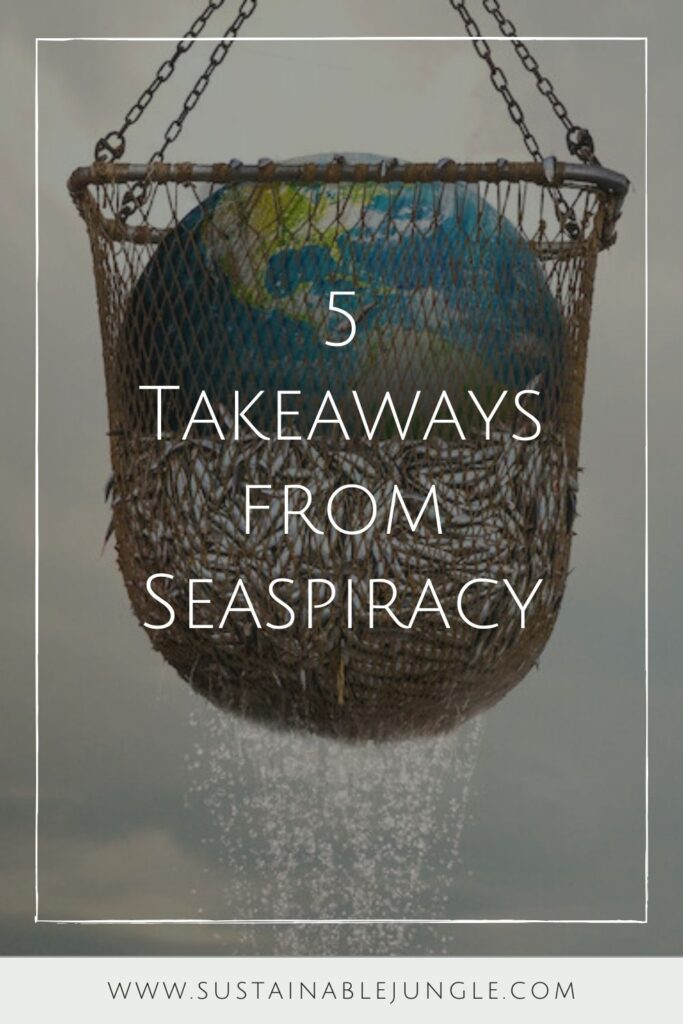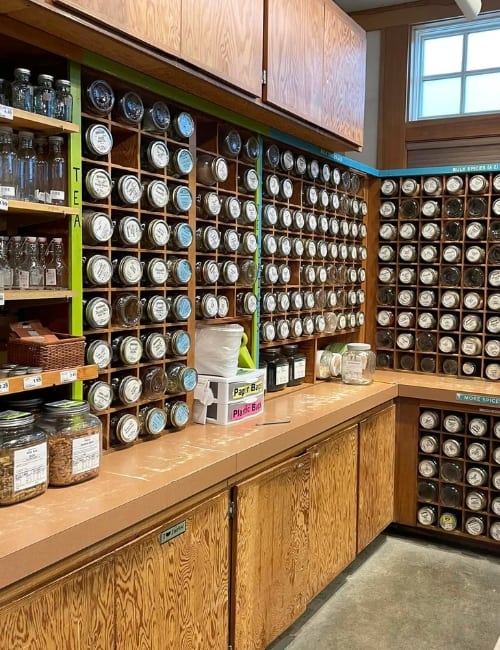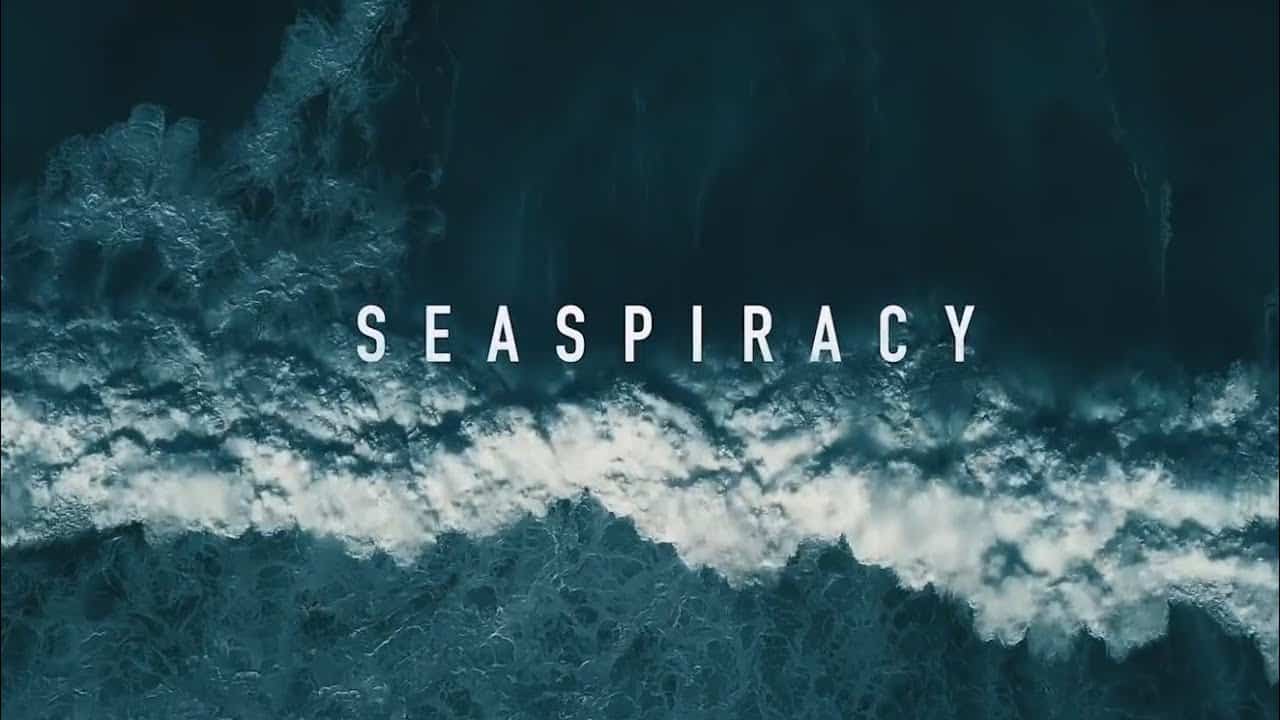
Seaspiracy: 5 Takeaways From This Hard Hitting Documentary
You might be angry at the missed the opportunity to call this film Conspirasea or just angry about the injustices wrought against our world’s ocean.
In both cases, it’s safe to say Seaspiracy has got people talking.
So much so that this documentary is sure to become one of the most iconic environmental films of the last decade, right up there with A Plastic Ocean and Cowspiracy.
Perhaps the name shouldn’t be Seaspiracy but Intricasea—because the issues at hand are far more complicated and intricate than a one-hour and 29-minute documentary can do justice.
After we watched this (and waited for our eco-anxiety to diminish), we dived into some of the Netflix documentary’s main themes and controversial points.
We may not have perfect insight to clear up the murky water, but by talking about these issues, we as a society can come up with ways to solve them.
Being aware and then engaged in environmental, social, and ethical problems is our best bet at finding fixes.
Whether you loved the documentary or hated it, kicked your seafood consumption to the curb or decided there are bigger environmental fish to fry, our planet needs us to have these sobering realizations and tough conversations.
So, what did we see as the main takeaways of Seaspiracy?
1. PLASTIC IS JUST THE TIP OF THE ICEBERG
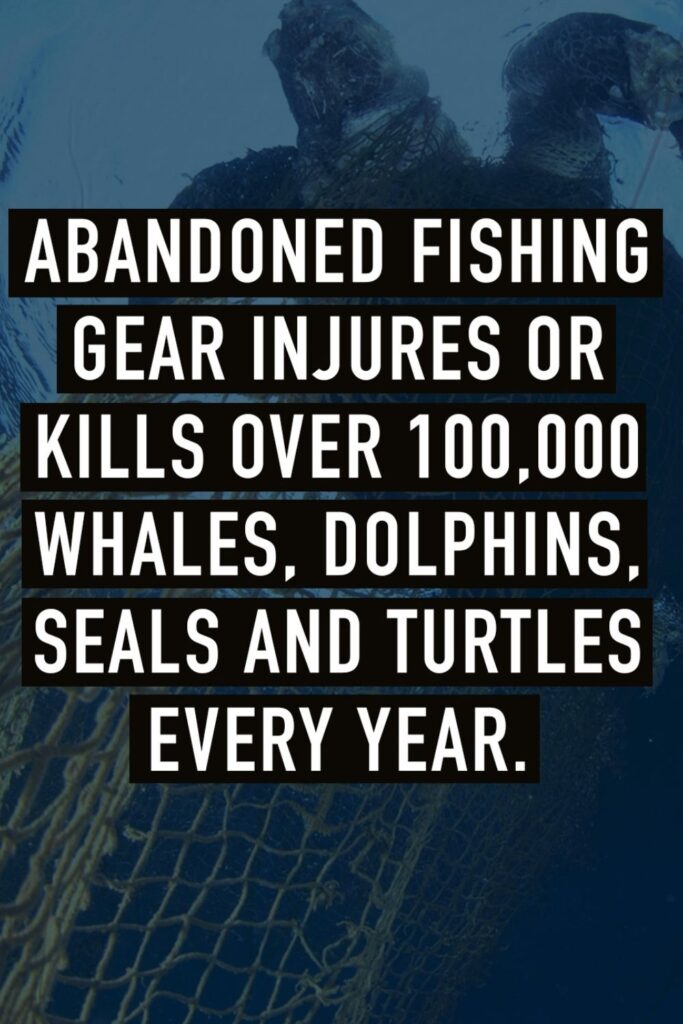
We’ve already discussed how our “plastic blinkers” might be taking our attention away from larger environmental issues (like biodiversity loss). Seaspiracy also made that clear in the first several minutes.
Is plastic a massive, ugly problem?
Yes. But it has been the poster child for environmental destruction for a while, perhaps distracting us from other problems.
There are plenty of other problems facing our world’s oceans, explored by Ali Tabrizi, Seaspiracy’s director and narrator.
Overfishing
The documentary claimed that by 2048, our oceans will be depleted of fish. While this fact has received some criticism (mainly because it’s based on an outdated 2006 study), the rate at which our oceans are losing their biodiversity is still shocking.
These numbers are reflected in more recent studies, too.
According to the Food & Agriculture Organization of the UN, our appetite for seafood has significantly increased in recent years. The growth rate of fish for human consumption is greater than that of meat from all land-based animals combined.
This is significant because estimates indicate that, as of 2018, 90% of our marine fish stocks are either fully exploited, overexploited, or totally depleted.
There’s a big culprit behind overfishing.
No, it’s not that salmon poke bowl you ate yesterday. Well, not directly anyway.
Bycatch
Bycatch, as the name suggests, refers to the fish or aquatic species that are inadvertently caught while fishing for commercial species.
An astonishing 9.4% to 40% (depending on your definition) of what ends up in nets, lines, and crates is actually bycatch, totaling a whopping 63 billion pounds of porpoises, sea birds, turtles, sharks, fur seals, whales, and other non-target species.
No worries, just release them, right?
Unfortunately no. Most are indeed discarded back into the ocean, but not before they’ve sustained severe injuries or already died.
Bycatch is terrible for obvious reasons. It harms beings for no purpose, but it also impacts our environment in ways that go beyond these ethical problems.
From an ecological standpoint, bycatch can affect an entire marine ecosystem by altering the availability of prey. It disrupts the food system, meaning that even species not directly caught and harmed can end up suffering from decreased availability of food.
Environmental damage from bottom trawling
While we live on a planet called Earth, a more appropriate name would be Ocean.
70% of this planet is covered by water, and our oceans play a very big role in carbon sequestration and mitigating the impacts of our changing climate. While most of us only encounter our blue planet on vacation, it’s important to recognize its role in keeping our planet healthy and habitable.
In the documentary, trawling was targeted as an environmentally destructive practice.
And rightfully so.
A New York Times article reported that bottom trawling for fish produces the same amount of greenhouse gas emissions as air travel—and not just a flight or two, but the industry as a whole (or Japan’s annual emissions).
When you think about it, it makes sense. Dragging a heavy net along the ocean floor may be an effective way to get mussels en masse, but it also requires a lot of horsepower (and thus fuel) to work.
That’s not even the biggest problem.
The seabed is a delicate place that contains many different life forms—including those that capture carbon. Degradation of the ocean floor and damage to marine habitats (including coral reefs) minimizes the ability of microscopic organisms, like phytoplankton, to absorb carbon dioxide and release oxygen.
This is something they’re pretty darn good at, too. This plant-like behavior of phytoplankton and other species has the potential to absorb four times as much CO2 as the Amazon rainforest. It can store it for longer, too.
Why aren’t we doing more to stop this?!
In a 2021 study published in Nature journal, it was reported that just 2.7% of the ocean is considered a marine protected area, or an area with recognized ecosystem services and biodiversity and a framework to protect it.
Because of conflicts between countries and their governments, fisheries, and illegal fishing operations, the protection of our oceans has been uncoordinated and, as a whole, totally ineffective.
Those are all the unseen environmental impacts of fishing. There’s another one that’s a little more eye-catching.
The impact of fishing nets
We’re taking things full circle and touching on plastic again.
While the documentary wanted to shift our focus away from vilified plastic straws and bags, it did introduce us to another problematic plastic: fishing nets.
The documentary reported at least 46% of ocean plastic is made up of fishing materials (read: nets, crates, and buoys).
While this exact amount has been contested and fishing nets may appear more significant in ocean gyres like the Great Pacific Garbage Patch because of their buoyancy, that doesn’t mean they’re still not a huge problem.
Derelict nets can harm marine and coastal species by both entanglement and ingestion. When there’s the equivalent of 55,000 double-decker busses in abandoned fishing gear (!) in the sea, it’s easy to imagine how this litter can pose a threat to wildlife.
Fortunately, many of our favorite sustainable clothing brands are using these ghost nets to make eco friendly recycled nylon garments like ethical and sustainable swimwear.
Unfortunately, this only addresses a tiny piece of the problem and doesn’t touch on the social side of the fishing industry’s problems.
2. SEAFOOD MIGHT COME WITH A SIDE OF SLAVERY
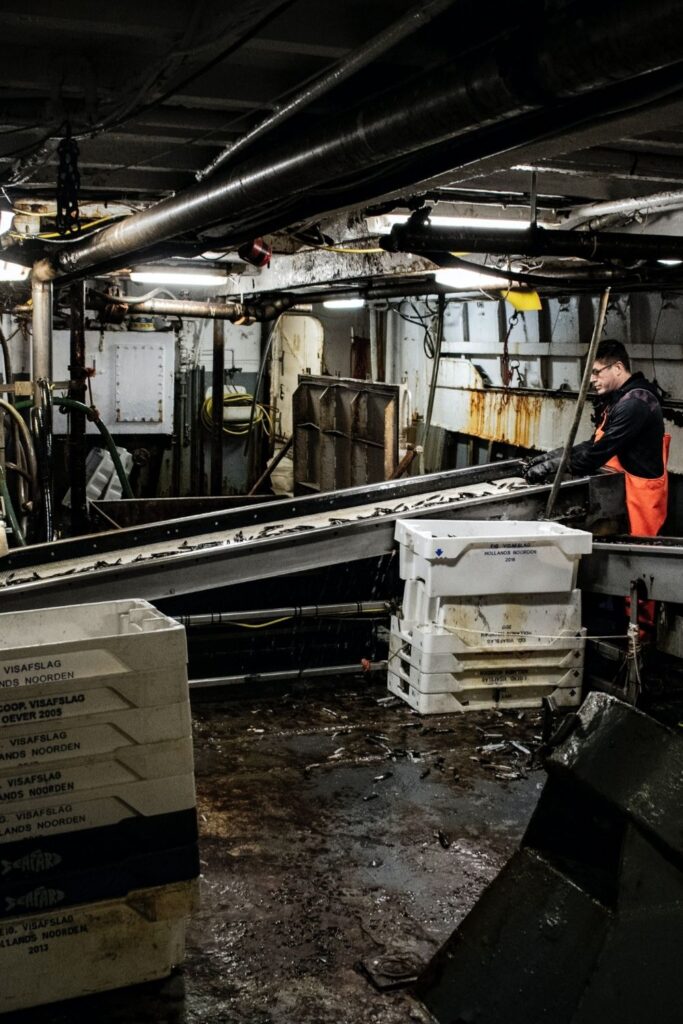
We’re sure we weren’t the only ones dropping our Jaws (pun intended) when Seaspiracy highlighted some of the social consequences of our appetite for anchovies.
Your California Roll also comes with a secret side of human trafficking, forced labor, and modern slavery.
According to the International Labour Organization, there have been several instances of migrant workers being threatened or forced to work onboard fishing vessels.
Long hours and low pay are paired with hazardous and intense work, so it may come as no surprise that fisheries have one of the highest fatality rates of all occupations.
Because many involved in the fishing sector come from low-income countries and come on board as migrants, inadequate language skills and improper or non-existent training means that many people have become extremely vulnerable to situations involving forced labor trafficking, sexual assault, and psychological abuse.
All told, forced laborers often succumb to illness, injury, or even death.
Crime in fisheries
Forced labor is a crime in its own right, so it should come as no great shock that it’s also associated with illegal fishing, money laundering, corruption, drug and arms trafficking, and other types of organized crime.
Criminally inclined fishing vessels engage in transshipment. Anything they catch, along with their crew and supplies, are transported from one ship to another on the high seas.
In these situations, human trafficking victims are kept away from port for several months at a time and rarely get the opportunity to report inhumane working conditions or human rights abuses.
While this certainly impacts those directly involved in the industry, it can also have negative consequences for marine ecosystems, fish stocks, and ultimately those who rely on the fishing industry for both livelihood and a food source.
3. MANY PEOPLE RELY ON THE FISHING INDUSTRY
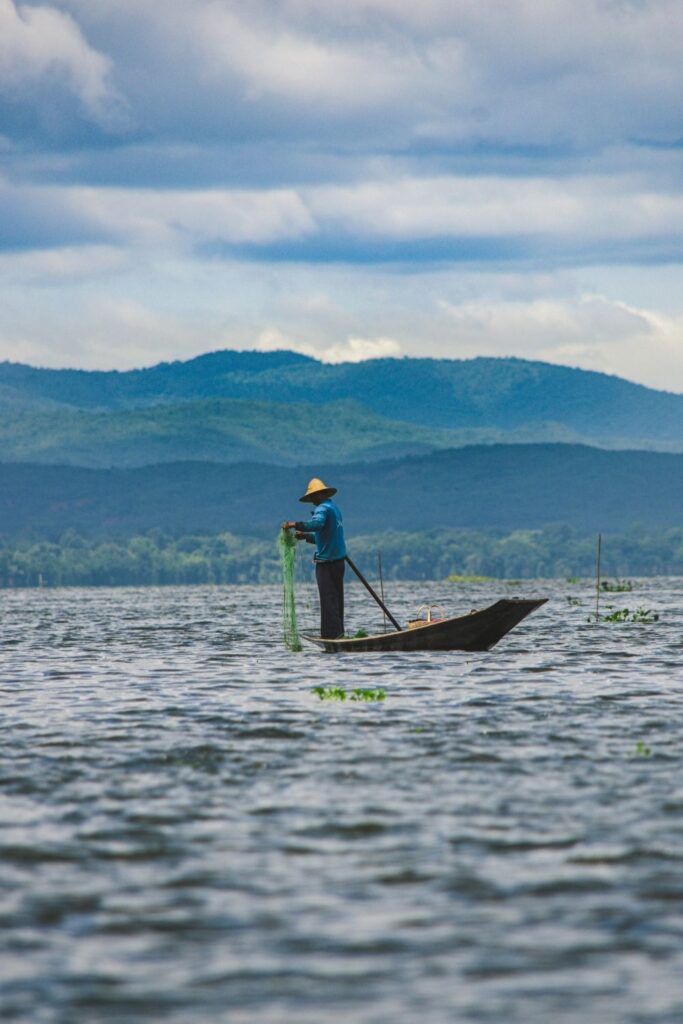
Globally, seafood is the most widely traded food commodity—and complex supply chains and transshipment practices make traceability nearly impossible.
Still, 10-12% of the world’s population depends on fisheries and aquaculture for income and three billion people rely on our oceans for their protein.
The fishing sector is made up of 51 million fishers, most of which are from developing countries, where 50% of the world’s traded seafood comes from. In these usually coastal nations, a vast majority of the population is entirely reliant on the fishing industry for both jobs and food.
They’re the ones who are often coerced into hazardous and exploitative working conditions, and those most negatively impacted by the crimes that take place in the fisheries sector.
Illegal, unreported, and unregulated (IUU) fishing operations take away much-needed jobs from local communities—and they diminish the capacity for our oceans to provide economic opportunities now and in the future.
Are we to just write the entire industry off as irreparably corrupted and ignore how that would impact hundreds of millions of people?
Not likely, but can we trust that sustainable and ethical fishing on a wide scale is even possible?
4. CAN CERTIFICATION BODIES BE TRUSTED?
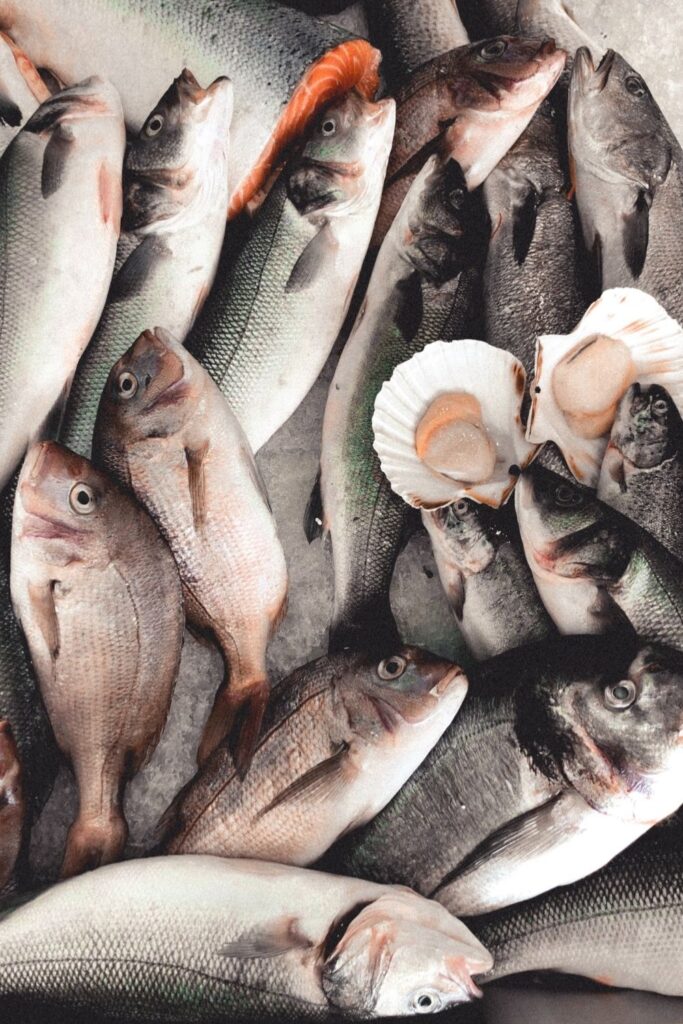
Many of us look for buzzwords to determine if our salmon is sustainable or not, “wild-caught” being the most notable.
But did you know that 32% of wild-caught fish in the US has been caught illegally?!
If buzzwords are out, isn’t there something to safeguard against such greenwashing?
Technically, yes.
Internationally, fishermen must have a license meaning their gear is controlled, size and catch limits are established, and conservation measures limit what types of marine species can be caught.
In some countries, additional measures include total allowable catches, individual quotas, and rights-based practices further regulate what is caught and how.
But the ocean is a vast open space and unlike other aspects of food production, efficient monitoring and complete regulation are impossible.
Every coastal nation around the world has an exclusive economic zone (EEZ) which extends 200 nautical miles from its shoreline. Each country is responsible for managing its EEZ and any fishing that happens there.
First, consider that a LOT of the ocean still lies outside any EEZ.
Next, consider what it means to have an effectively managed EEZ.
It means a regulatory framework and laws as well as a specific branch of government to oversee and regulate the zone. In the United States, there is the Magnuson-Stevens Act managed by state agencies, the National Oceanic and Atmospheric Administration (NOAA), or the National Marine Fisheries Service (NMFS).
Sounds great, right?
Yes, but the U.S. has the highest capacity and infrastructure for regulation. Other countries (especially those developing coastal countries that are more responsible for serving up your plate of tuna) simply don’t have the resources to develop frameworks and regulate fishing that occurs within their waters.
This is where certification bodies come in.
The problem with the Marine Stewardship Council certification
The Marine Stewardship Council was started by Unilever and WWF 20+ years ago, driven mostly by the fact that if fish populations continued to diminish, so would business.
For decades, it has been under criticism, reportedly greenwashing consumers into thinking that their “certified sustainable” seafood is actually sustainable.
In a 2011 NPR article, an interview with an MSC advisory member indicated that their “sustainable” seafood was often associated with diminishing target fish populations and/or environmental destruction.
Co-director of marine programs at Canada’s Ecology Action Center said “it’s a gamble” when you see an MSC label that infers your fish comes from sustainable fish stocks, has been produced with minimal environmental impact, and incorporates effective fisheries management.
While the blue MSC label provides some assurance that seafood is sustainably caught (compared to the non-certified alternative, anyway), it’s a relatively lenient certification process. Like federal fishing regulations, it’s also difficult to oversee and verify.
Due to that, it’s a very expensive and lengthy certification process, which may mean smaller fisheries actually using sustainable practices aren’t able to be certified for monetary reasons.
So… is there sustainable seafood?
On The Sustainable Jungle Podcast #40, we had the pleasure of speaking with Adam Baske and Julie Thomas from the International Pole & Line Foundation (IPNLF) about sustainable fishing practices.
The organization prides itself on one-by-one tuna, catching just one fish at a time. This is better for marine ecosystems, the tuna themselves, and the fishermen involved.
While organizations like IPNLF might not be able to provide seafood to feed our global appetite, they do show us that sustainable fishing is possible to some extent.
That said, other certification bodies have emerged, like The Monterey Bay Aquarium label.
While these certifications still fall short in some respects, they’re currently the best we have and are making some positive waves.
Is this enough? And what about the fish themselves?
5. FISH HAVE FEELINGS, TOO
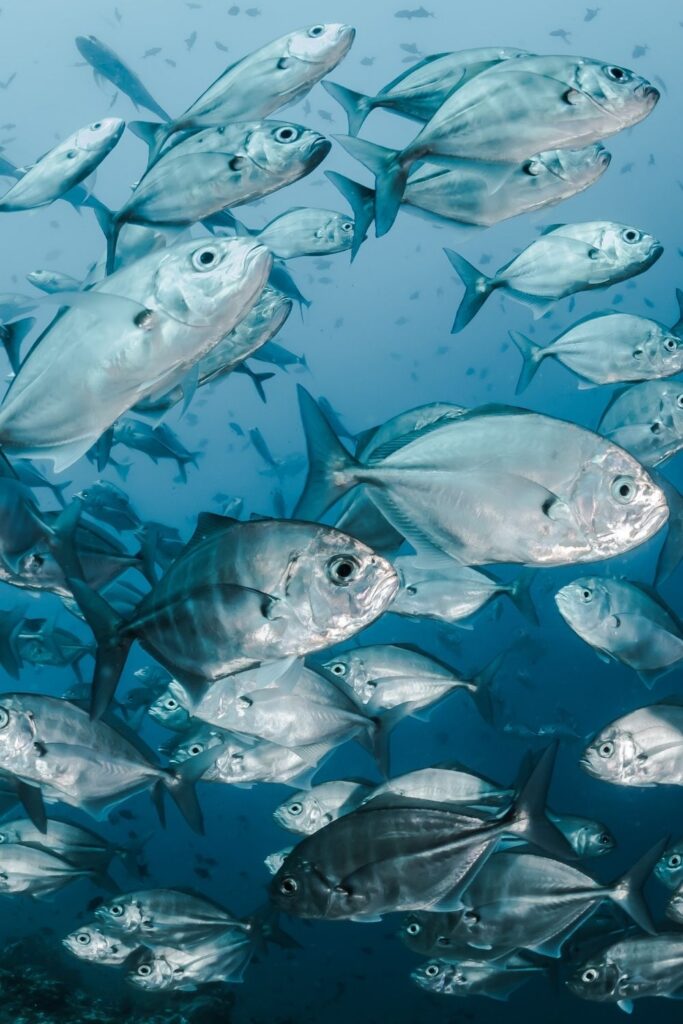
Seafood can be a somewhat murky topic for eaters, even those who follow a plant-based diet. For reasons unknown, the ethics behind killing fish hasn’t amassed as much attention as those behind killing a chicken or a cow.
In fact, we kill fish at higher rates than any other animal.
Kurt Cobain even famously said, “It’s okay to eat fish because they don’t have any feelings,” but to us that Smells like Green(washing) Spirit.
Studies show fish do feel pain.
They have what are called “nociceptors”, which can become activated by potential harms like pressure, chemical exposure, or high temperatures. Like mammals, fish produce opioids (pain killers) and have a similar brain response when exposed to pain.
While fish typically don’t have the same protections as farm animals, lab animals, and pets, this is changing.
Organizations like the Fish Welfare Initiative (FWI) have emerged to promote higher animal welfare standards for wild-caught and farm-raised fish.
It’s likely that we’ll see similar efforts emerge, particularly following the Seaspiracy documentary. It’s also likely we’ll see more people switch to a totally plant-based diet.
SEASPIRACY AND POTENTIAL SEAFOOD SOLUTIONS
After watching Seaspiracy, many of us have been left with more questions than answers (along with a ton of eco anxiety and eco guilt). And while no clear way forward has emerged, all of this discussion is bringing about several possible solutions.
As the end of the documentary suggests, a vegan diet is a way to reduce your carbon footprint at home and mitigate all of these impacts on the ocean.
But is veganism and vegetarianism for everyone?
While a plant-based diet is the most ethical and sustainable for those who can and wish to access it, conflicting factors like cultural beliefs, nutritional requirements, and financial situation may undermine its ability to provide the solution.
Plus, it’s not entirely fair to place the entire burden on the individual when the industry as a whole can do much better.
In recent years, many countries have been improving by limiting bycatch, setting fish welfare standards, and providing fishermen with the resources they need to catch fish sustainably.
There’s also the upcoming 2021 UN Biodiversity Conference, where a goal has already been established to preserve 30% of oceans by 2030. This might mean new marine protected areas that preserve fishing stocks and biodiversity, reducing carbon emissions, or keeping more plastic from entering them.
It looks like we know the way to go, we just don’t know the perfect wave to surf to get there.
FINAL THOUGHTS ON SEASPIRACY
If you feel like you’re swimming (or possibly drowning) in sad environmental, ethical, and social facts, you’re not alone.
While Seaspiracy has been received with mixed enthusiasm and a healthy catch of criticism, it has certainly gotten us all talking, which we ultimately see as a good thing.
Awareness is the first step to solving any problem, after all.
Because fish are further away geographically and further down the food chain than other animals, they have received less attention over recent years. The fact that they’re less cute and cuddly might have something to do with that, too.
Either way, it’s clear that this needs to change.
As a wise shark named Bruce once said, “Fish are friends, not food,” and while we might not need to discredit them as the latter, we definitely need to at least regard them as the former.
For now, just keep swimming by keeping the conversation flow going. A good place to start: recommend the documentary to friends and family and don’t be afraid to have those tricky conversations at the dinner table.
For more inspiring films, check out our list of Zero Waste Documentaries.
